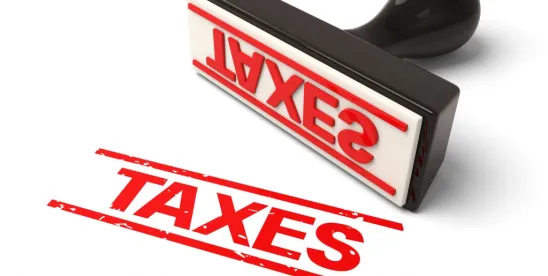Secretary Mnuchin and Director Mulvaney have peaceably resolved their differences over the review process of tax regulations. Will greater OMB review of Treasury regulations be a positive or a negative for taxpayers?
New MOU Governs OMB Review of Treasury Tax Regulations
After weeks of discussion and disagreement, the Department of the Treasury (“Treasury”) and the Office of Management and Budget (“OMB”) released a new Memorandum of Understanding (“MOU”) governing the terms and conditions under which OMB will review Treasury tax regulations. OMB, bolstered by conservative House Republicans, wanted to exert more control over the IRS while Treasury thought the current review arrangement was working well. Because OMB sign-off is required before reviewable regulations can be published, the new MOU has the potential to significantly expand the extent of OMB influence over tax regulations, perhaps with results more favorable to business. However, although the MOU imposes time restraints on OMB to complete its reviews, the new process may delay the release of regulations taxpayers need to implement tax reform, affecting the ability of businesses to make timely strategic and operational decisions in response to the new law.
OMB now has the authority to review any tax regulatory actions resulting in more than $100 million of annual nonrevenue economic impact that raise novel legal or policy issues or that conflict with other agencies’ actions or plans. OMB’s Office of Information and Regulatory Affairs (“OIRA”) will have 45 days to conduct its review of proposed regulations, with a shorter, expedited review process of 10 business days available for regulations relating to recently enacted tax reform. “In the rare event of a policy disagreement that could not be resolved during the review process, OIRA will facilitate a principals meeting to resolve any remaining issues and, if needed, elevate those issues to the President,” the MOU states. The expanded role for OMB brings to an end a prior arrangement with Treasury that limited OMB review to significant legislative regulations and that has been in place since 1983.
On the day of the MOU’s release, both Secretary of the Treasury Steven Mnuchin and OMB Director Mick Mulvaney had positive words for the new agreement. Already, however, many tax experts, business leaders, and lawmakers in Congress have said they worry the revised procedures could further slow the regulatory process and delay implementation of the Tax Cuts and Jobs Act (“TCJA”).
Which Tax Regulations Will Be Subject to OMB Review?
Under the terms of the MOU, not all tax regulations will be subject to OMB review but more will be than under the previous framework. Although the standards for review in the MOU may appear in theory to be straightforward, in practice, they may not be so black and white. Tax regulations will be subject to review if they are likely to result in any one of the following three scenarios:
- Have an annual nonrevenue effect on the economy of $100 million or more. This appears to refer to costs other than the actual tax revenue effect as estimated by the Joint Committee on Taxation. This could include, for example, the effects on mergers and acquisitions, transactions, or other business activity. This standard will be fluid depending on how the costs are estimated, including the assumptions made and the models used to determine the economic impact.
- Raise novel legal or policy questions. The term “novel” is undefined. Depending on the criteria used to determine the meaning of the term, this could result in a broad swath of regulations being subject to OMB review.
- Create a serious inconsistency or otherwise interfere with an action taken or planned by another agency. Again, the terms are not defined, leaving considerable leeway to determine the scope of OMB review.
What Constitutes “Review”?
The MOU states that regulations falling within the scope of the above criteria will be subject to the analytical requirements of Executive Order 12866, Section 6(a)(3)(B) (“EO”). This September 30, 1993 EO establishes the following procedures and documents to be furnished to OIRA:
“(B) For each matter identified as, or determined by the Administrator of OIRA to be, a significant regulatory action, the issuing agency shall provide to OIRA:
-
The text of the draft regulatory action, together with a reasonably detailed description of the need for the regulatory action and an explanation of how the regulatory action will meet that need; and
-
An assessment of the potential costs and benefits of the regulatory action, including an explanation of the manner in which the regulatory action is consistent with a statutory mandate and, to the extent permitted by law, promotes the President’s priorities and avoids undue interference with State, local, and tribal governments in the exercise of their governmental functions.” (emphasis added.)
As mentioned, after receiving the above information, OMB will have 45 days for review, subject to extensions mutually agreed upon by OMB and Treasury. Secretary Mnuchin or his deputy and applicable OMB officials can designate certain TCJA provisions for expedited review, in which case OMB will have only 10 business days to conduct its analysis—though again, mutually agreed-upon extensions are possible. Ultimately, Treasury cannot publish or publicly release any regulations falling under the aegis of the MOU unless OMB has notified Treasury that it has waived or concluded its review. In the case of disagreement between Treasury and OMB as to whether a regulation should be implemented, the president will serve as the final tiebreaker. Further, on a quarterly basis, Treasury is required to submit to OMB notice of planned regulations describing each regulatory action, identifying any significant policy changes, and providing a discussion of whether regulations will be subject to review under the MOU.
What Is the Practical Impact of Enhanced OMB Review?
Ultimately, OMB holds the cards on tax regulation projects falling under the purview of the MOU since they cannot be published or publicly released without OMB signing off on them. This gives OMB considerable influence over the implementation of the TCJA and future regulations and could interject a greater degree of politics into the process, particularly given the president’s role as the final arbiter. The new process could cut either way for taxpayers, depending on the policies of the administration in power.
Each of the three emphasized factors in (B)(ii) above could trigger pushbacks, rewrites, delays, and uncertainty as the TCJA is implemented. Already, Treasury is under considerable pressure to mitigate drafting errors, unintended consequences, and unanswered questions resulting from Congress enacting a comprehensive tax reform bill in just seven weeks. If OMB is looking over Treasury’s shoulder for taking any undue regulatory literary license, the practical impact could be that taxpayers will be required to operate with more uncertainty until legislative action can be taken. It is unclear to what extent promoting the president’s priorities could be a way to reshape tax provisions he does not like, effectively giving the president after-the-fact line-item veto power. Finally, federal and state tax conformity is a perennial stress point when new federal tax laws are passed as states determine whether they can afford to conform to the federal changes. For example, many states currently are decoupling issues like full expensing because their budgets cannot absorb the cost.
Although the timelines for OMB review in the MOU seem relatively brief, they could readily lead to extensions, particularly when complex tax rules are at issue. OMB will need sufficient and skilled staffs to timely review and evaluate regulatory projects. Deadlines and the potential for delays could be used as leverage to negotiate policy decisions.
Which Regulations Will Be Affected?
Given the leeway inherent in the MOU, it is difficult to predict with certainty what the scope of the memo will be. However, it is likely that many of the TCJA provisions most urgently needing guidance—those that are the most significant and complex in the new law—will fall under the MOU’s purview. Various international provisions that will affect decisions on choice of entity or location of entity, including the BEAT, GILTI, and FDII, are examples. Since the MOU applies only to regulations, notices or other guidance may be used as a work-around to the extent they can provide sufficient direction and authority to taxpayers. Practical considerations like OMB staffing and the availability of technical tax expertise may affect the number of regulations reviewed and the level of scrutiny.
Don’t Be Discouraged!
The additional layer of review resulting from the new MOU does not reduce the importance of providing input to Treasury regarding regulations that matter to your business. Treasury still needs and wants stakeholder input. Greater taxpayer involvement and buy-in on regulatory projects could increase the chances that OMB will not make changes during its review. OMB review also may present another opportunity for taxpayers to provide input on regulatory projects.
Lauren M. Flynn also contributed to this post.






 />i
/>i

